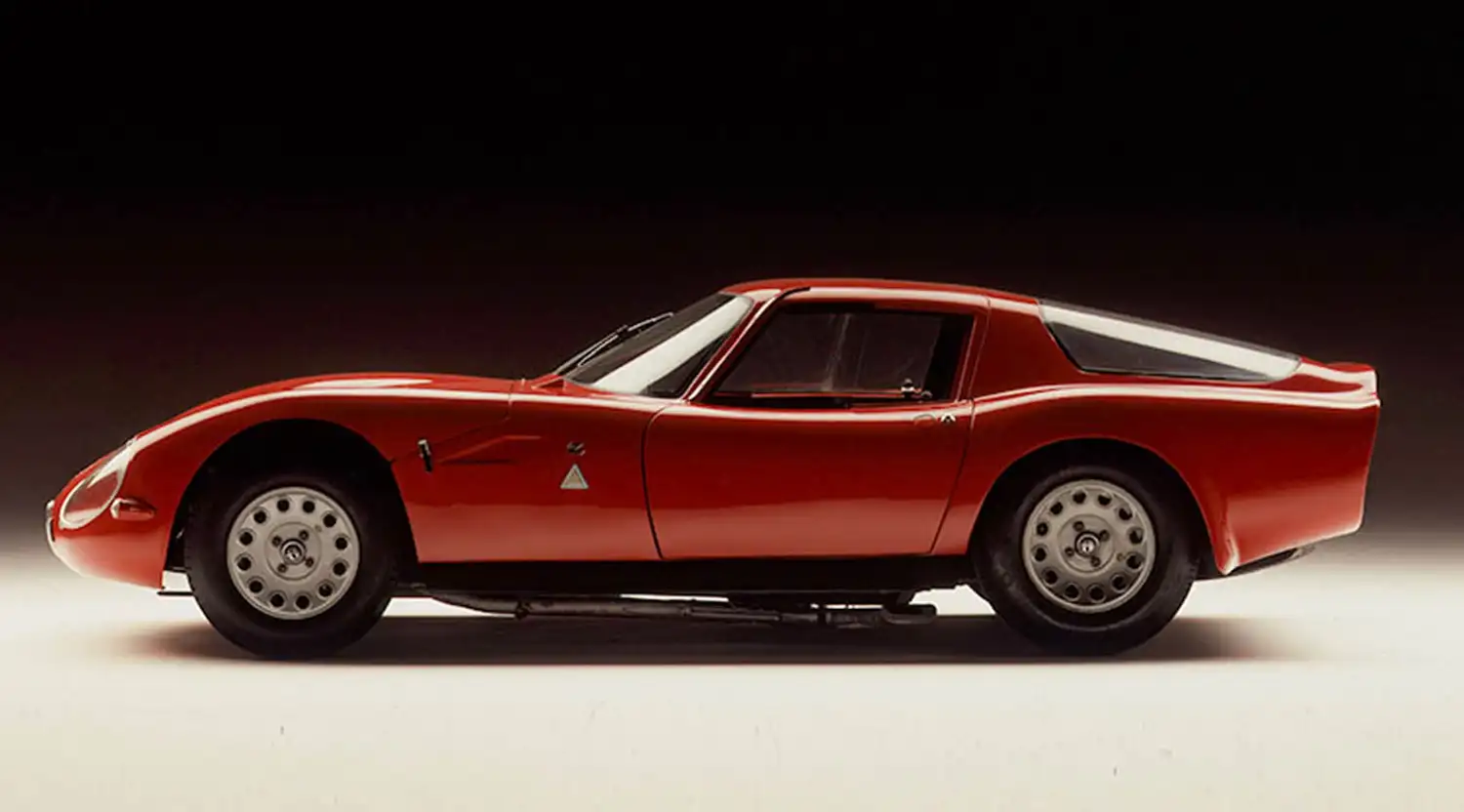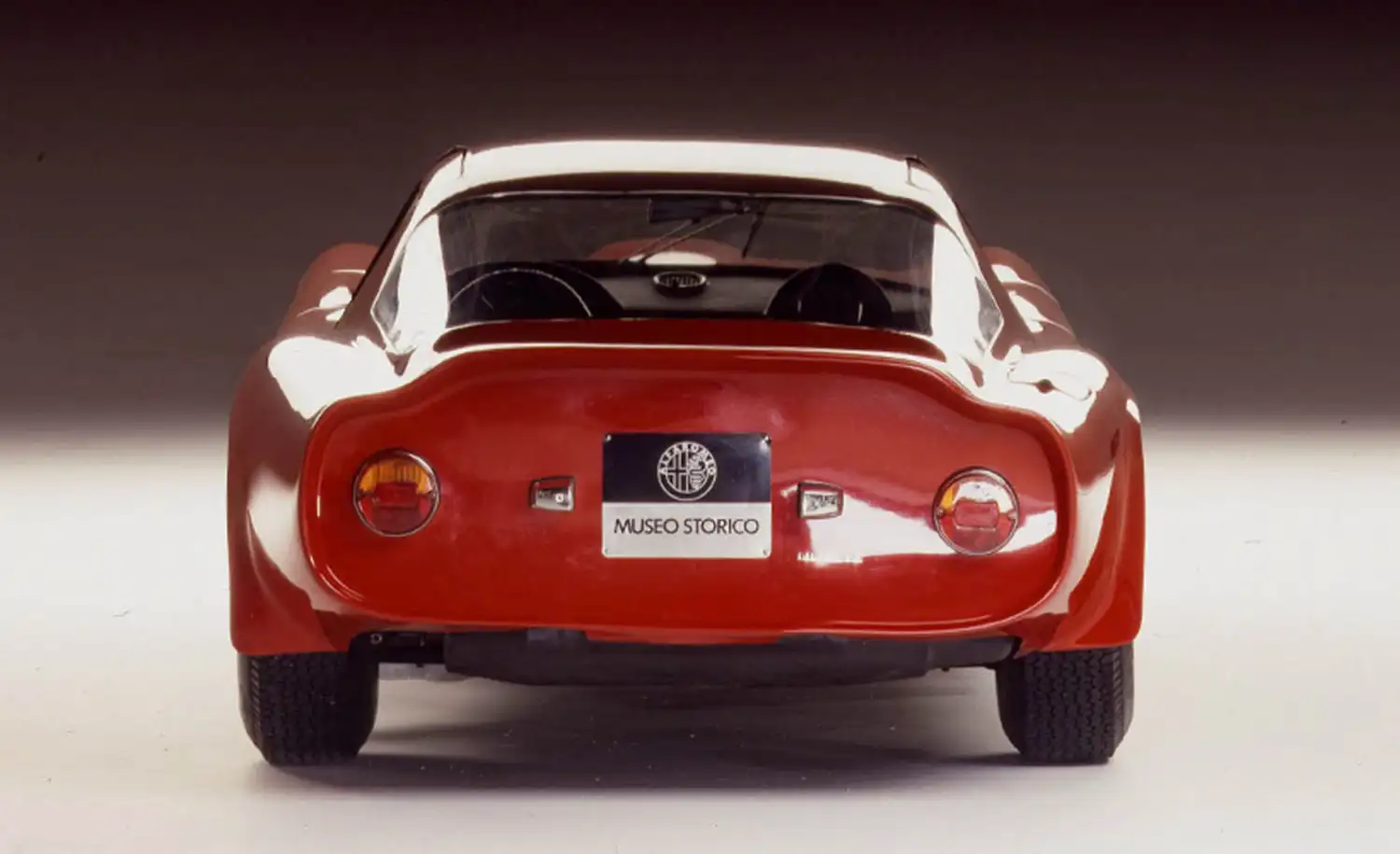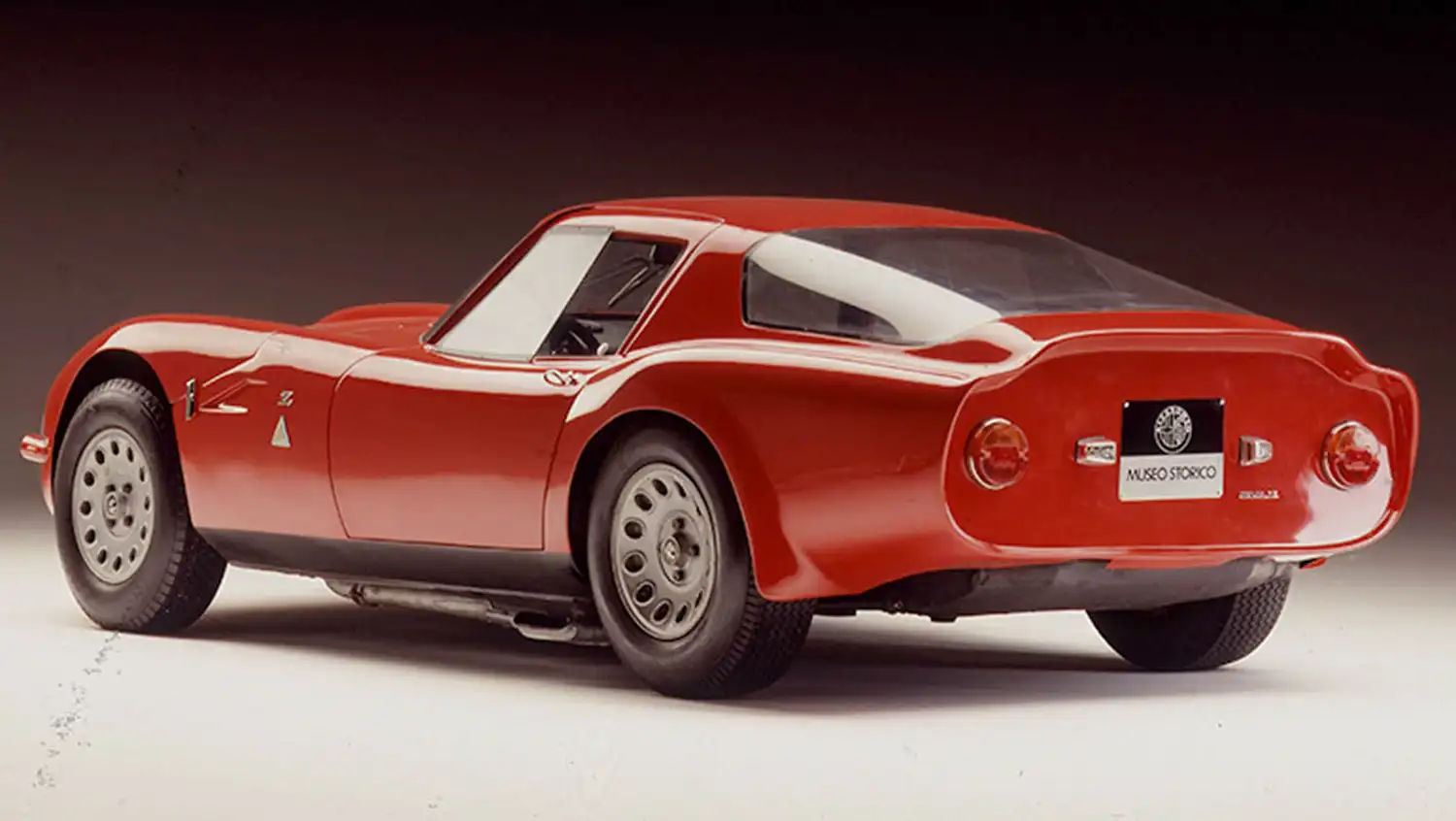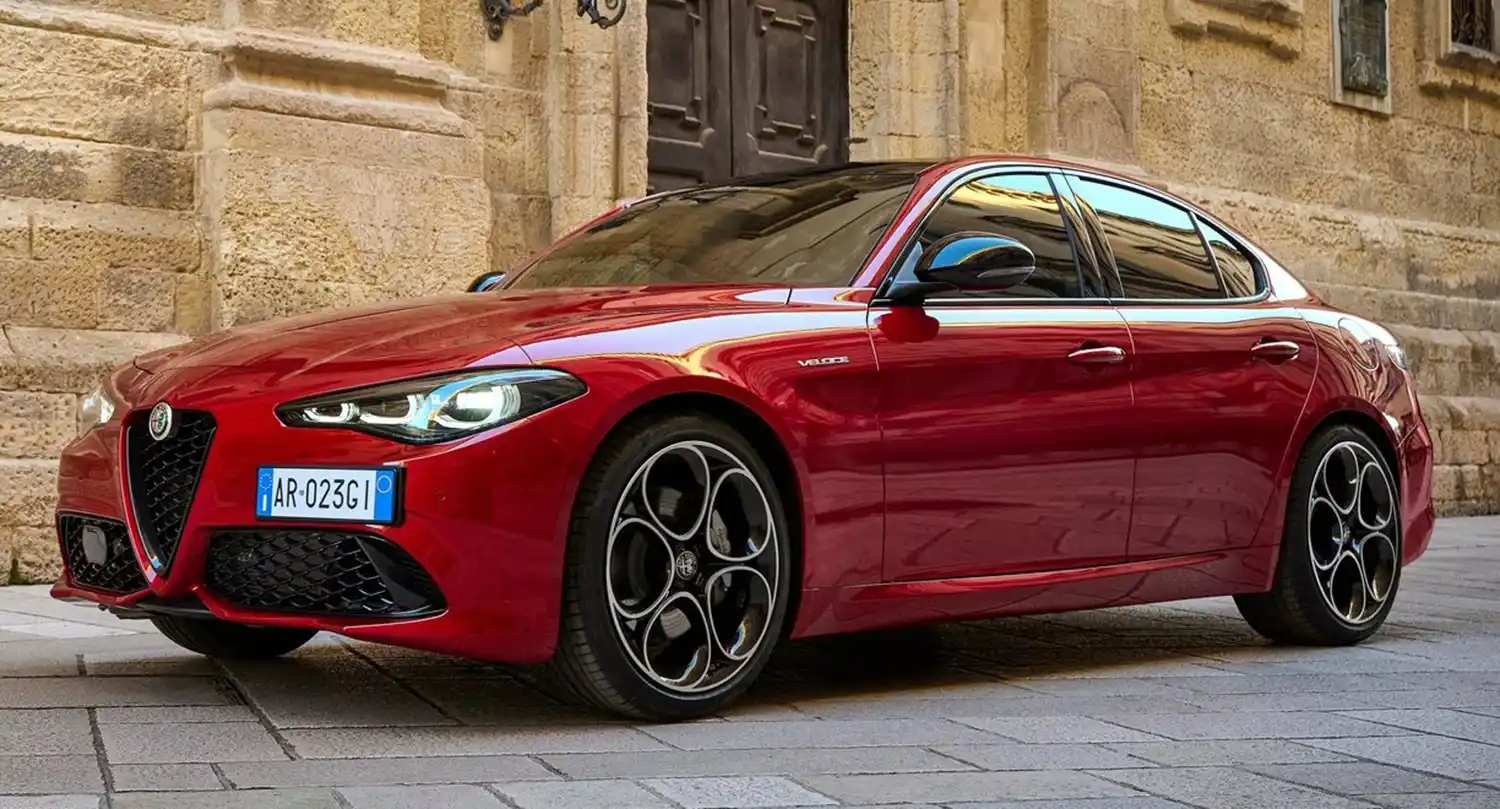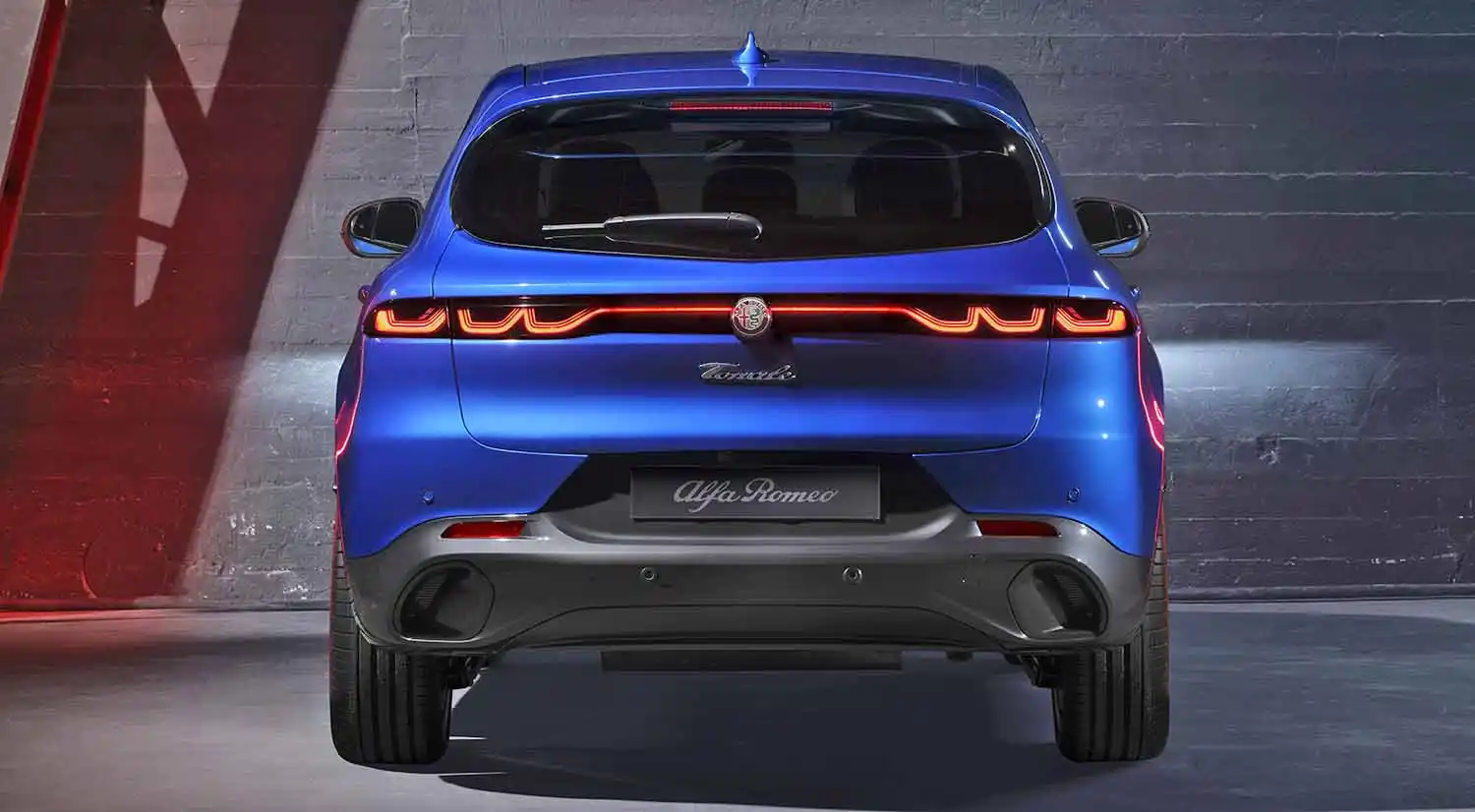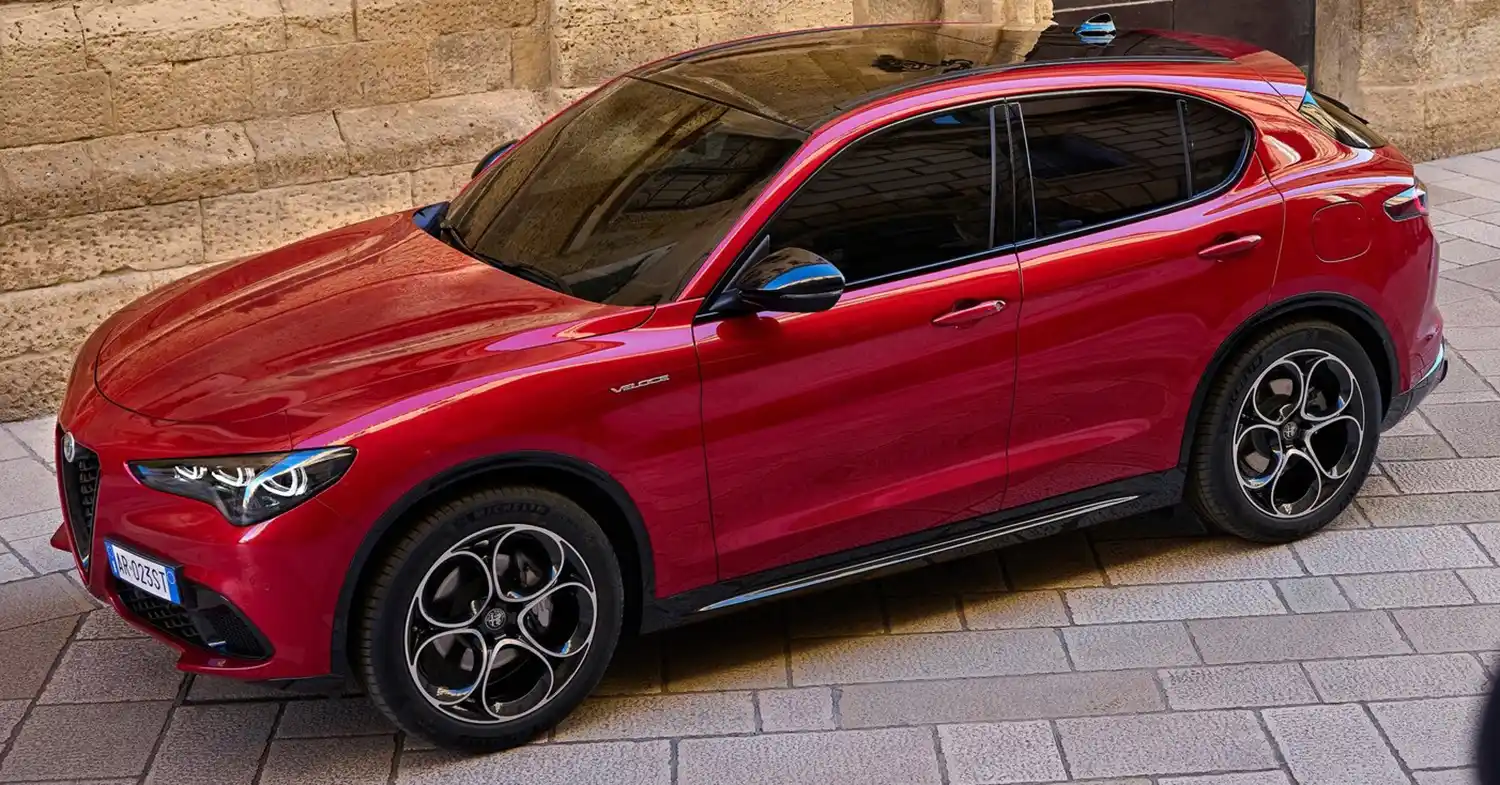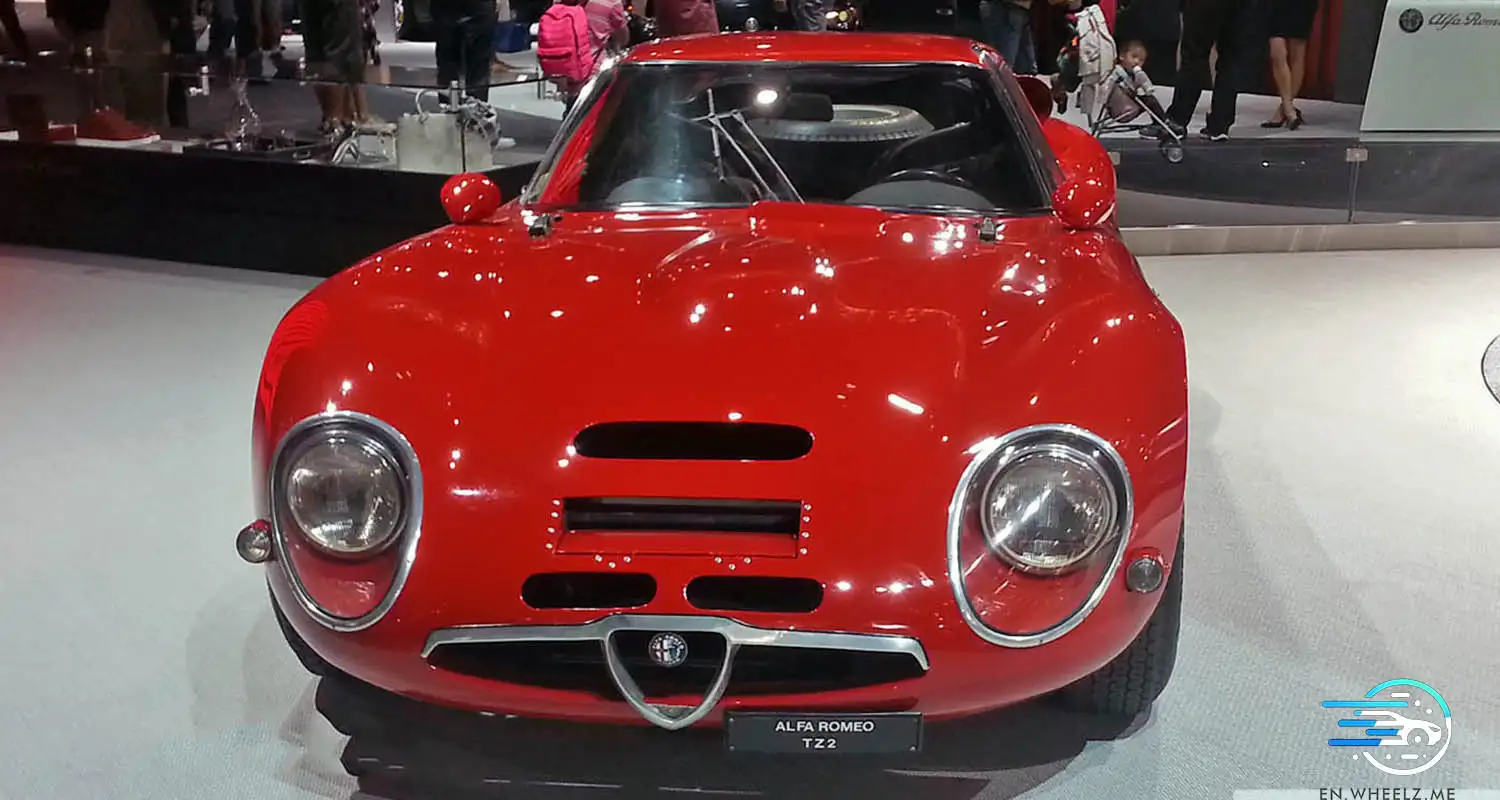
Origins and Development
In the early 1960s, Alfa Romeo embarked on an ambitious project to create a racing car that would excel in the Gran Turismo (GT) category. This effort resulted in the Alfa Romeo Giulia Tubolare Zagato (TZ), which was later succeeded by the enhanced TZ2 version.
The TZ made its debut at the Turin Motor Show in 1962. Designed to combine a new tubular chassis with innovative coachwork by Zagato and mechanics derived from the Giulia, the TZ was a pioneering model. The nickel-chromium tubular chassis was constructed by SAI Ambrosini in Perugia, while the lightweight alloy coachwork was crafted by Zagato. The mechanical components came from the Alfa Romeo Giulia TI and were assembled by Delta, led by engineer Chiti. Delta later evolved into Auto-Delta, establishing its headquarters in Settimo Milanese.
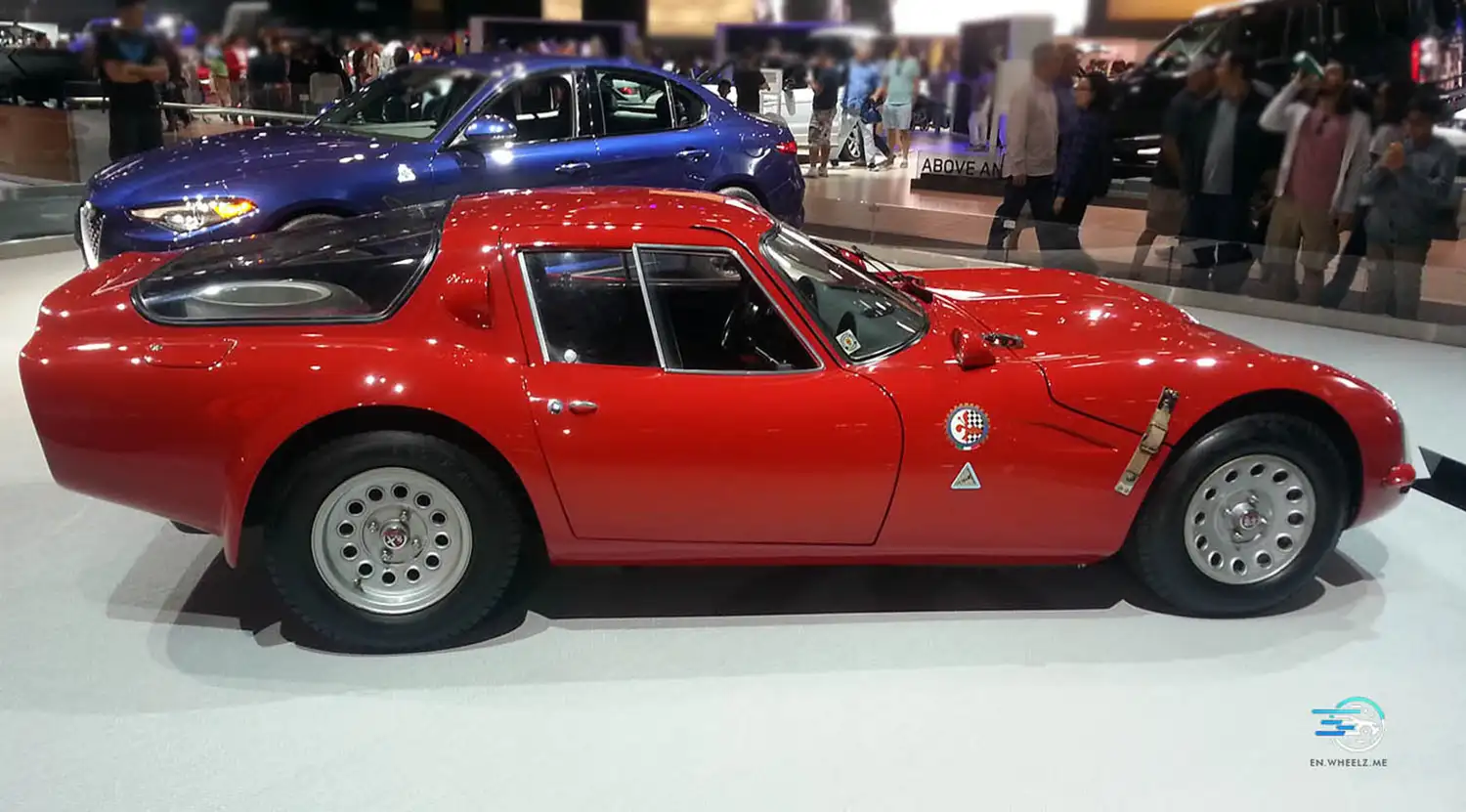
The design aimed to create a racing car that was both lightweight and sturdy, with streamlined aerodynamics and a powerful engine. The tubular chassis ensured a lean weight and structural rigidity, while Zagato’s Coda Tronca (“short tail”) design contributed to the car’s aerodynamic efficiency. Auto-Delta enhanced the 1.6-liter four-cylinder engine from the Giulia TI, boosting it to approximately 160 HP with the addition of two 45 mm 2-barrel Weber carburettors and an increased compression ratio from 9.7:1 to 11.4:1.
Alfa Romeo Giulia TZ2 – 1965
By 1965, the Giulia TZ2 emerged as the refined version of its predecessor. The TZ2 featured several significant updates:
- Engine: Straight-4 Otto cycle, anterior longitudinal, DOHC, 2 valves, twin spark, 1570 cm³
- Power: 170 HP @ 7,500 rpm
- Top Speed: 245 km/h
- Weight: 620 kg
- Design: Zagato
- Body Type: Coupé
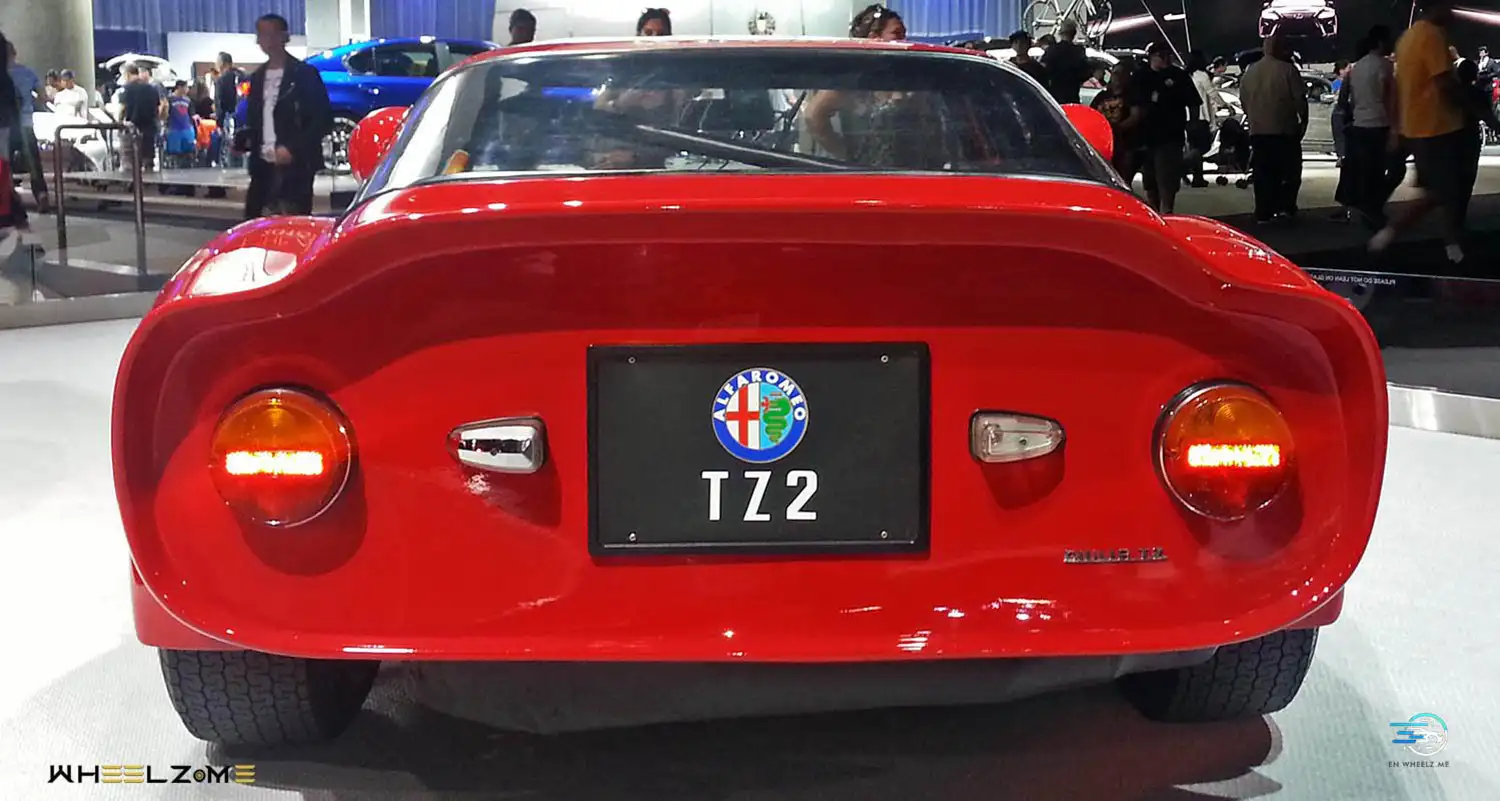
Production and Design Changes: Between 1963 and 1966, a total of 117 Alfa Romeo Giulia TZs were produced, with only twelve TZ2 models made until 1967. The TZ2 featured a more aerodynamic fibreglass body, replacing the earlier alloy construction. This modification not only strengthened the car’s structure but also reduced weight by approximately 40 kg. The TZ2 also introduced a new twin-spark cylinder head and dry sump lubrication, pushing the engine’s power to 170 HP at 7,500 rpm. The car was fitted with new 13” magnesium wheels, accommodating wider and lower-profile tyres.
Racing Success: The Giulia TZ2 quickly proved its racing pedigree. In its debut race at the 1000 Kilometres of Monza on April 25, 1965, the TZ2, driven by Bussinello and De Adamich, secured seventh place overall and first in the GT 1600 category. The TZ2 continued to dominate, with victories in various prestigious races including the 12 Hours of Sebring, Targa Florio, Nürburgring 1000 km, 6 Hours of Melbourne, Giro d’Italia, and Critérium des Cévennes. The following year saw further successes in Monza, Sebring, Targa Florio, and Nürburgring.
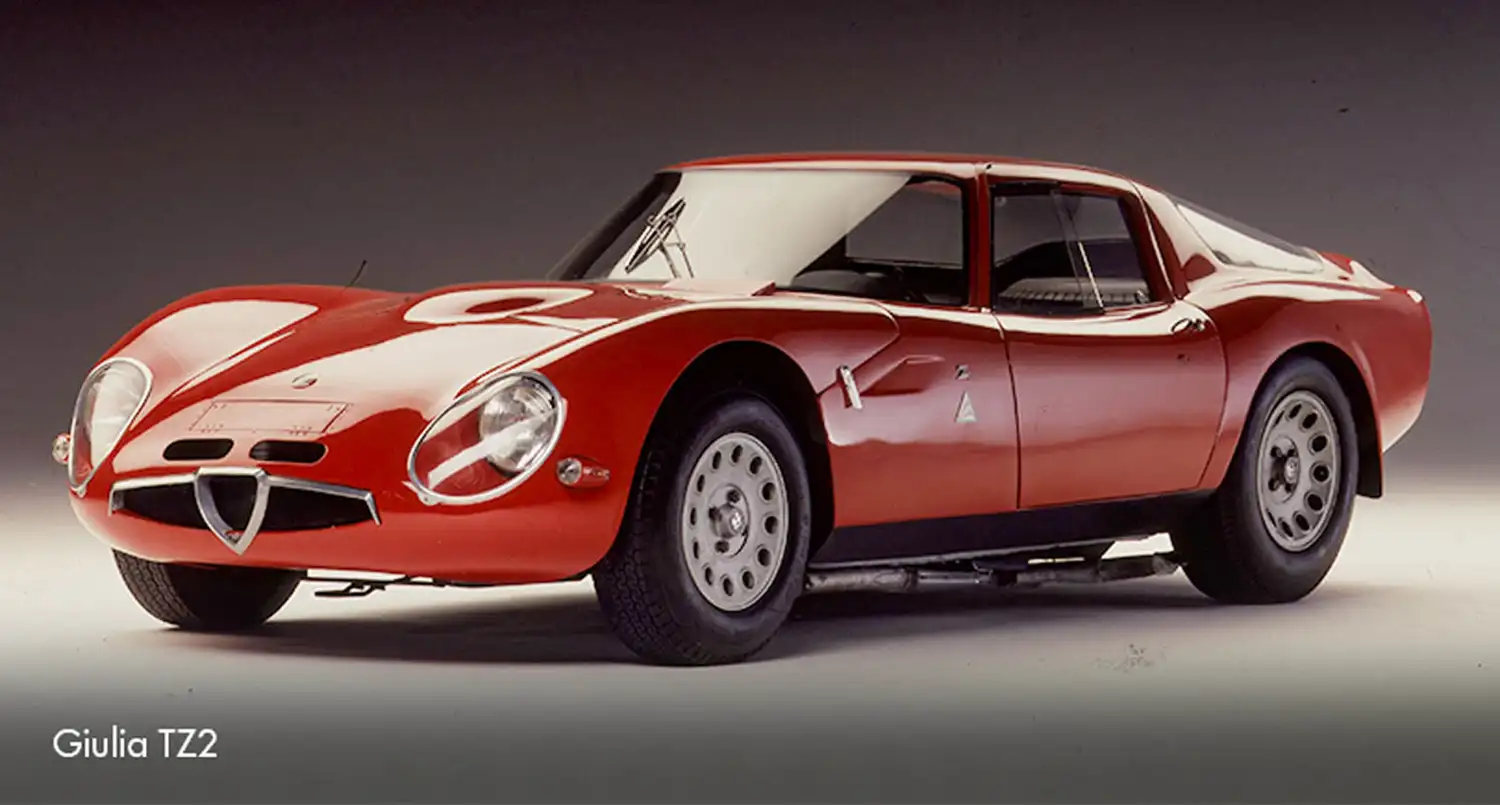
Legacy
Today, both the Alfa Romeo Giulia TZ and TZ2 are preserved in the Alfa Romeo Museum in Arese. These classic racing cars remain in pristine condition, participating in prestigious international events dedicated to historic and racing vehicles. The Giulia TZ2’s blend of advanced engineering, lightweight construction, and racing success cements its place as a significant milestone in Alfa Romeo’s illustrious motorsport history.
Source: FCA Heritage & Wheelz.me
This Article use tools from Chatgpt
